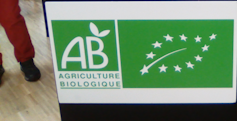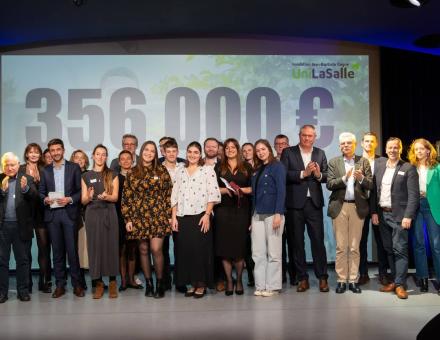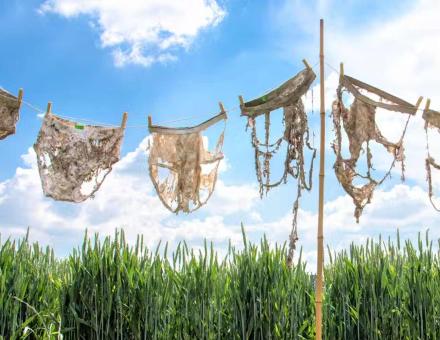Written by Marie Asma Ben-Othmen, a lecturer and researcher at UniLaSalle, this article published on The Conversation analyzes the differences between “organic” labels in different regions of the world. It highlights their criteria, controls, and effects on consumer confidence.
“Organic”: a clearly identifiable and often reassuring label. However, the realities behind this global label vary. While standards in Europe are fairly strict, they are much more flexible in North America. In emerging countries, controls are uneven. All of these factors can affect consumer confidence in organic products. How can we make sense of it all? The ideal solution would be to harmonize the rules from one country to another. Here is a brief overview.
“Organic” is a global label that can be applied to products from Europe, China, or South America. However, it is by no means universal. Behind the reassuring label, the standards vary depending on the country of production.
For example, while Europe imposes fairly strict rules, the United States is much more flexible. In some emerging countries, such as Brazil, controls are often less stringent. Here we offer a brief overview, which we hope will help you make more informed consumer choices.
The absence of pesticides behind the success of French organic farming
In France, consumption of organic products has grown rapidly. In 2023, after twenty years of continuous growth, this market had increased 13-fold compared to its initial level.
This trend can be explained by the fact that consumers perceive organic products as more natural, particularly due to the absence of authorized pesticide treatments. Organic production must comply with specifications that are more environmentally friendly, which promotes consumer confidence in a context increasingly marked by food mistrust.
However, this label remains a regulatory construct that is highly dependent on the national context. This positive dynamic is now facing legislative changes that could undermine it. The Duplomb law, adopted on July 8, 2025, illustrates how political choices can undermine confidence in agriculture by reintroducing the issue of pesticides into the debate. This law proposes exemptions to the ban on the use of plant protection products containing neonicotinoids.
Although the law does not directly affect organic producers, it may have indirect effects on the sector. By reintroducing exemptions for the use of controversial substances, it revives public mistrust of conventional agriculture. In this context, organic sectors could appear as a safe haven for consumers, reinforcing their role as a benchmark of trust in a fragile agricultural landscape.
In the European Union, an organic label guarantees GMO-free products
The European Union (EU) established strict regulations for organic farming in 1991. Beyond the issue of pesticides, which, as we have seen above, is more acute in France, the issue of genetically modified organisms (GMOs) also offers an interesting perspective at the European level.
The European organic label completely prohibits the use of GMOs in certified organic products at all stages of the production chain. This means that it is prohibited to use GMO seeds for organic crops, GMO animal feed for organic livestock, and GMO ingredients for organic processed products.
In addition, European organic specifications impose strict agricultural practices by limiting the use of synthetic inputs. This includes synthetic nitrogen fertilizers, pesticides, herbicides, and fungicides. Only certain natural or mineral inputs are permitted, such as manure, compost, and green manure. This reflects the philosophy of organic farming, which is based on preventing disease and agronomic imbalances by maintaining soil fertility, biodiversity, and ecological balance.

French and European logos
relating to organic farming.
JJ Georges, CC BY-SA
In France, the French AB label is based on European regulations, but adds a few requirements of its own, such as more rigorous traceability and land use controls.
While both labels remain aligned on the main principles, French organic farming is generally stricter in its implementation, a legacy of a long tradition of militant organic farming.
Organic farming in Europe also faces a number of current challenges, particularly in terms of agronomy. These include the need to strengthen research into alternatives to pesticides and other synthetic inputs, such as biocontrol, adapted varietal selection, and ecological soil management.
Finally, it is clear that the EU has made organic farming a pillar of its “farm to fork” strategy " strategy. The aim of this strategy is to achieve 25% of European utilised agricultural area (UAA) in organic farming by 2030.
In order to guarantee the reliability of the label, the EU has set up a centralised and harmonised control system to supervise food value chains. These encompass producers, processors, and distributors. These controls are based on specific rules defined by European Regulation 2018/848.
Consumers will find various organic certification labels, such as the European EU Organic label, the national AB label in France, and the Bio-Siegel in Germany. Although all these labels are based on the same European regulations, the way they are applied (e.g., the type of monitoring) may vary slightly from one country to another. Each country may also add additional requirements. For example, France imposes a higher frequency of controls, while Germany insists on transparency in the supply chain.
More flexible labeling in North America
In North America, the approach to organic farming is more flexible than in the European Union. In the United States, the USDA Organic label, created in 2002, defines national standards for organic production. It is characterized by a certain flexibility compared to European standards, particularly with regard to the use of inputs, since certain synthetic chemicals are tolerated if they are deemed necessary and there are no viable alternatives. These include, for example, certain disinfectants for livestock buildings and pest control treatments in livestock farming.
Canada, for its part, implemented its national organic product regulations—the Canada Organic Regime—later than the United States. This system is equivalent to that of the United States, in that a bilateral mutual recognition agreement allows the sale of Canadian organic products in the United States and vice versa.
The two systems thus have many similarities, particularly with regard to the list of authorized substances and their flexibility of use. However, they differ from the European model in several respects.
First, while the EU applies a near-zero tolerance for GMOs, the United States and Canada implicitly tolerate the accidental presence of traces of GMOs in organic products. According to USDA Organic regulations, the deliberate use of GMOs is strictly prohibited, but unintentional contamination does not automatically result in the loss of certification if it is deemed to be beyond the producer's control. Canada takes a slightly stricter position, imposing tighter controls and a lower tolerance.
This difference sparked controversy at the time of the mutual recognition agreement, with some Canadian consumers and producers fearing that American organic products, which are considered less stringent on the issue of GMOs, would enter their market. These concerns also extended to farming conditions. While in Europe animal densities are strictly limited and outdoor access is highly regulated, in North America some organic production systems can be much more intensive, leading to industrial organic farms, which results in a loss of proximity to the original ideal of organic farming.
Finally, another contrast concerns soilless production. In the United States, hydroponic farms—which grow plants without soil—can be certified USDA Organic, provided that the inputs used are on the authorized list. In Europe, however, hydroponics is excluded because it does not respect the link to the soil, which is considered central to the agroecological philosophy.
In emerging countries, organic but according to what criteria?
In emerging countries, the issue of organic farming is different. Indeed, it depends heavily on the measures and criteria put in place by these countries to guarantee its credibility. For example, in India, Brazil, and China, national organic labels are fairly recent (most were introduced between 2000 and 2010) and less restrictive than their European equivalents.
While in the EU, controls are carried out by accredited and independent third-party certification bodies, in Brazil, producers can be certified through a participatory guarantee system (PGS), which is based on collective self-assessment by farmers. As a result, these labels struggle to build genuine consumer confidence.
Furthermore, in many cases, organic certifications are primarily designed to meet international market standards in order to facilitate exports to the EU or North America, rather than to structure a domestic market. This is the case, for example, in India.
This situation often leaves local consumers with a limited and sometimes unreliable supply. In this context, private international certification bodies such as Ecocert, Control Union, and BioInspecta are playing an increasingly important role. They improve the recognition of these products but reinforce a form of dependence on external standards, which raises issues of food sovereignty and social justice in these countries.
Organic certification: a global label... but fragmented
The lack of universal mutual recognition between different organic certification systems causes confusion among consumers. It also creates significant constraints for producers.
In practice, a farmer who wants to export part of their production often has to obtain several different certifications. For example, a Mexican producer must be certified both USDA Organic to access the US market and EU Organic to enter the European market.
This proliferation of procedures increases costs and administrative complexity for producers, while reinforcing inequalities in access to international markets.
For consumers, the widespread use of the term “organic” can give the illusion of a universal standard, when in fact it covers very different specifications depending on the country. This situation creates ambiguity and can be misleading, masking disparities in agricultural practices and levels of requirements behind an apparently common label.
How can consumers find their way around?
To find your way through the jungle of “organic” products, you need to look beyond the simple logo displayed on the packaging and find out about the actual origin of the product and the specifications of the specific label that certifies it.
It is also essential to bear in mind that organic does not automatically mean ‘local’ or "small producer .“ Some certified organic products come from globalized industrial supply chains.
Finally, consumers can play an active role as ”food citizens" to encourage greater transparency and traceability by favoring distribution channels that provide clear and detailed information on the origin and production methods of their products. In doing so, they support a more democratic and responsible food system. It is precisely this citizen involvement in the food system that can promote the development of a culture of local and sustainable food, based on trust, attachment to the land, and cooperation between producers and consumers.
In order for organic farming to deliver its full potential in terms of the agroecological transformation of global food systems, it may be necessary in the future to consider international harmonization of organic standards. Only then can it become a true common language for consumers, with the same meaning from one country to another.
Marie Asma Ben-Othmen, Lecturer and researcher in Environmental Economics & Agroeconomics, Head of the Master of Science in Urban Agriculture & Green Cities, UniLaSalle
This article is republished from The Conversation under a Creative Commons license. Read the original article.






